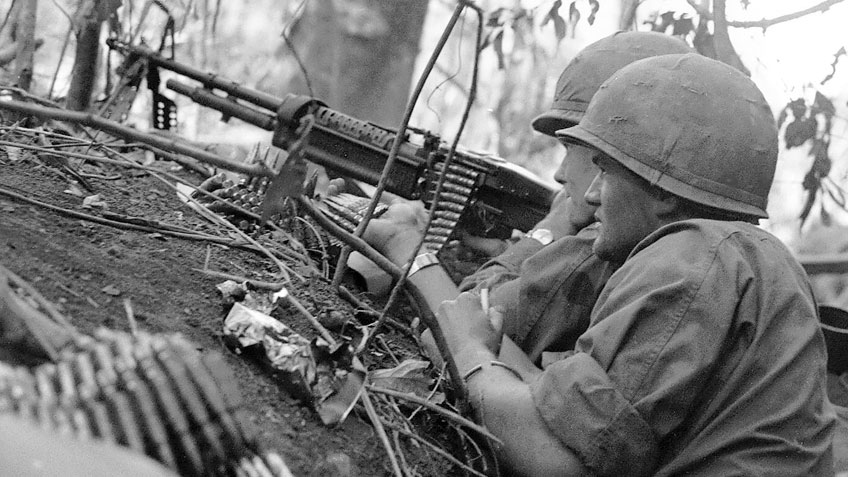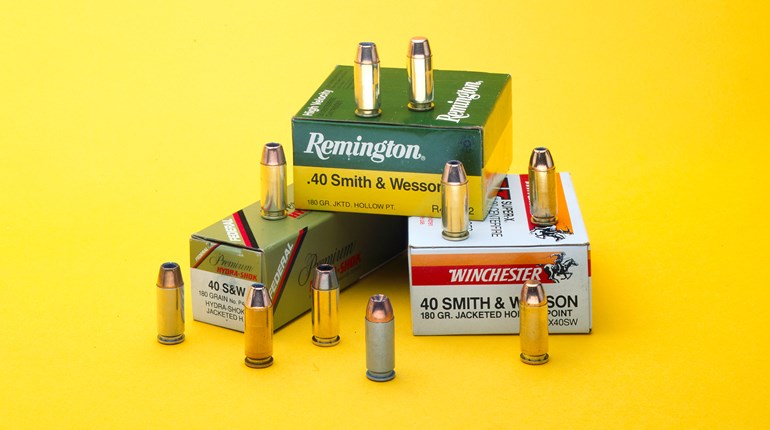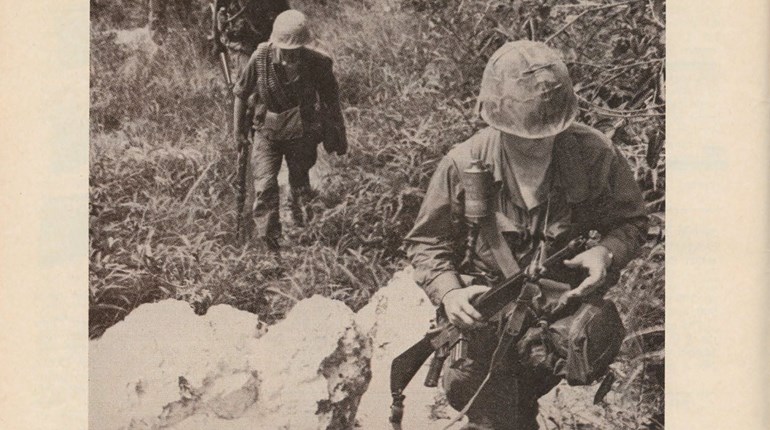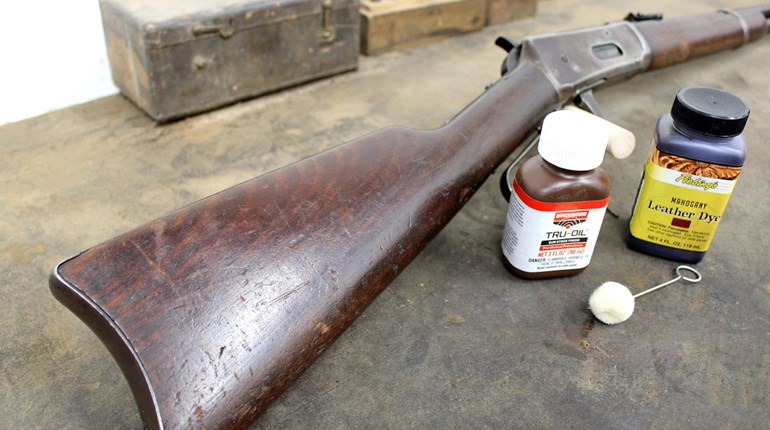
A machine gun crew weighs many environmental and scientific factors to deliver maximum effective use of the platform in combat, as can be seen above with these Soldiers laying down suppressive fire with an M60 while fighting in Southeast Asia.
Life in the beaten zone is apt to be uncertain, but understanding this old military term is essential to fully appreciating one of the most effective types of firearm ever made. The machine gun has been with us since the turn-of-the-century era (19th to 20th). That’s more than 120 years of reliable service. Made in factories over all the world, in a great variety of sizes, shapes, calibers and operating systems, the machine gun has long been a source of impactful firepower for the infantry of the world. Before we get to the beaten zone, we have to look at the cone of fire.
Machine guns don’t fire a bunch of a shots at a time, but they do fire single shots in rapid succession. As long as the gunner presses the trigger, the gun obediently delivers another shot. Depending on many factors like the ground, stability of the mount and other things, the trajectories of a group of shots form a cone—literally, a cone of fire. All those bullets start at the same spot in the barrel of a machine gun, but the paths vary a bit when they leave the muzzle. Eventually, gravity calls all those shots back to the ground. Their pattern of strikes on the ground is known as the beaten zone. It has been designated thus as least as far back as the late 1950s when this writer was a weapons platoon leader in the 3rd Marines. Actually, “beaten zone” was heard well before World War I.
When a machine gun puts a stream of bullets into the air, the effect sort of resembles a garden hose spraying a stream of water. The pattern of water striking the lawn is somewhat elliptical and becomes longer or wider depending on how you tilt the hose. Essentially, the machine gun does the same thing. When these guns were first introduced to the battlefield, they were often used almost like artillery. Massed machine guns were set up to fire parallel to each other. The cone of fire of each gun was close to its neighbor. If you had enough guns, you could cover a vast expanse of ground with bullets—one massive beaten zone. The organization of infantry units in the Great War included entire battalions of infantry soldiers armed primarily with machine guns. In time, we came to understand that mortars and artillery were a more efficient way to do the same thing.
If the ground on which the fight is taking place is relatively flat, certain aspects of the beaten zone can be used to even greater advantage. When the machine gun is placed so that the cone of fire is nearly parallel with the ground, the beaten zone stretches out in length. If you are shooting over level or uniformly sloping ground, the bullet’s trajectory will not rise above the height of an enemy soldier. This is called grazing fire, and it can extend out to as far as 750 yards. It is an often-sought, seldom-realized condition that maximizes the potential of the machine gun. Infantry tacticians always try to get their machine guns placed to maximize their ability to produce grazing fire. But, in either offensive or defensive fighting, they also try to do something else.
They try to get the long axis of the beaten zone to coincide with the long axis of the target. We already know what the beaten zone is, so the long axis is simply an imaginary line that divides it in half. The target is a group of enemy troops. Invariably, they are going to be in some kind of formation. Draw the same imaginary line and divide the formation in half. If it’s at all possible, get the long axis of the beaten zone right on the long axis of the target. This ideal type of engagement is called enfilade fire.
Consider an incident that was at least rumored and perhaps actually happened in Vietnam. A Marine rifle squad with an M60 machine-gun team attached was on a patrol well into a disputed area of Vietnamese countryside. They stopped along the banks of a shallow river and hunkered down in the undergrowth. In time, a lone North Vietnamese soldier emerged from the trees on the far bank and looked cautiously about. He signaled, and the remainder of his platoon stepped quickly into the river and made ready to cross. Apparently, whoever was in charge wanted to get across as quickly as possible.
He put his troops in a column and hastened to get across. The machine gunner pulled the butt of the M60 into his shoulder and lined up his sights on the closest. He waited until the oncoming column of enemy soldiers was about halfway across before he pressed the trigger. It was over in two or three long bursts.
Now, I think you should understand cone of fire, beaten zone, grazing fire and enfilade fire. It is the essence of the machine gun as fightin’ iron.






































